Wheel caster
In modern industry and daily life, wheel casters, a seemingly simple component, carry the efficient operation of material transportation systems. As a leading company with 30 years of professional manufacturing experience, we have witnessed the evolution of caster technology from a basic load-bearing tool to a key component of complex systems around the world.
1.Core technology and innovative breakthroughs of casters
1.1 Revolutionary evolution of bearing system
The core performance of wheel caster depends on the design accuracy and durability of their bearing system. Traditional single-row bearing structures are prone to stress concentration and premature failure when facing asymmetric loads. Our patented double-row bearing technology solves this industry problem by redefining the bearing structure. This technology adopts a unique inner ring design, with one side edge protruding to form a convex part, the other side concave to form a groove part, and a through hole or threaded hole set in the center.
This innovative design allows:
More balanced load distribution: The double-row ball structure distributes the load to two independent rows of rolling elements, increasing the load capacity by 40% compared to traditional single-row bearings
Reduce rotational resistance: The precision-separated ball cage reduces friction resistance, ensuring silent operation (<55dB) and smooth start-up
Extended service life: Laboratory accelerated wear tests show that the life of the double-row bearing system can reach 2.3 times that of the single-row structure under continuous operation under a load of 800kg
More importantly, we use a special vulcanization process to permanently bond the outer ring to the elastomer. This combination avoids the micro-motion wear that may be caused by traditional pressing, and exhibits excellent corrosion resistance in extreme environments with humidity or high chemical content
1.2 Wheel tread material science: a breakthrough beyond rubber
The choice of wheel tread material directly determines the performance of the wheel caster in a specific environment. Beyond traditional rubber formulas, the polymer composite elastomer system we developed has created a new benchmark for wheel tread technology:
Polyurethane hybrid material: The HybriFlex™ formula, which combines the wear resistance of polyurethane with the elasticity of rubber, shows a wear resistance index 3 times higher than that of ordinary rubber in concrete floor tests, while maintaining the best hardness balance of 85±5 Shore A
Breakthrough in temperature adaptability: By adding special silane compounds, the wheel tread material maintains stable physical properties in the range of -40°C to +80°C, solving the problems of low-temperature brittleness and high-temperature softening
Chemical corrosion-resistant formula: The BioSafe™ series developed for biological laboratories and food processing environments can withstand long-term corrosion from common disinfectants (such as sodium hypochlorite and peracetic acid) and complies with FDA and EU 1935/2004 food contact material standards
Performance comparison table of different wheel tread materials
Material type Load capacity index Wear resistance level Applicable temperature range Chemical resistance rating
Traditional rubber 1.0x B-level -20°C~+60°C Medium
Polyurethane 1.2x A-level -30°C~+90°C Good
Nylon 1.5x Grade A+ -40°C~+120°C Excellent
HybriFlex™ 1.3x Grade A+ -40°C~+80°C Excellent
1.3 Mounting Structure Engineering: From Components to Systems
The mounting structure of the wheel caster is the key interface for its integration into the equipment system. We redesigned the traditional threaded rod and base plate installation method and developed a modular quick-install system:
TriLock™ three-point locking mechanism: Different from the traditional single-point fixation, the unique triangular buckle design allows quick installation within 10 seconds and increases the torsional strength by 200%, which is particularly suitable for the frequent replacement needs of logistics sorting centers
Intelligent brake integration system: Combining mechanical brakes with sensors, it not only provides physical locking, but also monitors the caster status (rotation angle, load change) in real time, and transmits data to the central control system through the IoT module
Dynamic load compensation technology: Add a hydraulic damping system between the base plate and the wheel frame, and automatically adjust the pressure distribution when an unbalanced load is detected, effectively preventing the equipment from overturning, which is particularly suitable for the handling of medical equipment and precision instruments
These structural innovations have evolved wheel caster from simple moving parts to the core elements of intelligent material handling systems, laying the foundation for the intelligence of equipment in the Industry 4.0 environment
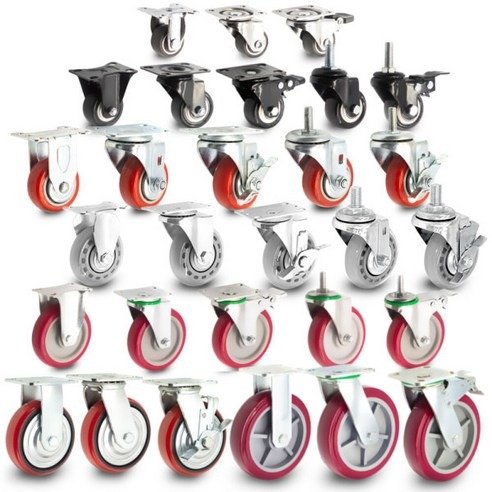
2.In-depth analysis of industry applications and customized solutions
2.1 Medical and health field: Precision movement in a sterile environment
The requirements of medical equipment for casters are the highest standards in the industry. In the process of providing supporting solutions for the world’s top medical imaging equipment manufacturers, we developed the MedGlide™ series of casters and overcame three major technical difficulties:
Dust-free and silent challenge: A special embedded fully enclosed bearing structure is used with medical-grade grease to achieve double dustproof seals, and the rotation resistance is kept constant within the range of 0.8-1.2Nm in the 10,000-hour operation test
Chemical resistance solution: The wheel surface material has passed the ethylene oxide (EO) sterilization verification, and the physical properties remain stable after repeated sterilization cycles, and the tear strength only decreases by less than 5% (the industry average is >15%)
Anti-interference technology: The magnetic compatibility design uses non-magnetic materials (titanium alloy wheel frame + special stainless steel) to ensure that the safety distance around MRI equipment is shortened from the traditional 5 meters to 2 meters, significantly improving the utilization rate of medical space
In the latest feedback from Johns Hopkins Hospital, the mobile medical workstation using the MedGlide™ series has an average daily moving distance of 8.5 kilometers in the busy environment of the ICU, with zero failure records in two years, and the fatigue of nurses is reduced by 27%
2.2 Industrial manufacturing: A reliable partner in extreme working conditions
The requirements for wheel caster in modern manufacturing have shifted from simple load-bearing to system-integrated solutions. In the case of the stamping workshop of an automobile manufacturer, our ForgePro™ industrial wheel caster series developed for high-temperature metal debris environments has achieved breakthroughs:
Heat Shield Protection Technology: A ceramic fiber insulation layer is added between the wheel surface and the wheel hub to effectively block instantaneous heat radiation up to 300°C and protect the bearing lubrication system from high-temperature failure
Impact-resistant structure: The hexagonal honeycomb wheel core design is used with a highly elastic polyurethane outer wheel to absorb 70% of the impact energy when the equipment passes through the track connection, protecting precision equipment
Heavy-load innovation solution: A four-wheel synchronous steering system developed for loads above 10 tons. Each caster unit integrates four independent wheel bodies, and a hydraulic balancing system is used to ensure uniform load distribution
This solution has performed well in the application of Tesla’s Shanghai Super Factory, reducing the heavy mold transfer time by 40% and reducing production line downtime caused by wheel caster failure by 300 hours per year
2.3 Furniture and commercial space: the art of balancing aesthetics and functionality
The wheel caster design in commercial space faces the dual challenges of aesthetics and functionality. The AeroStealth™ series, developed in collaboration with top European furniture designers, redefines the mobility experience of high-end office and commercial spaces:
Hidden structure design: The wheel casters are completely integrated into the furniture base with embedded installation, completely invisible when fixed, and automatically pop out by simply touching the edge when unfolded
Floor protection technology: The elastic wheel surface with nano-level surface treatment leaves no trace after 10,000 round-trip tests on wooden floors, and the friction coefficient is stable in the range of 0.08-0.12
Silent breakthrough: The application of acoustic damping materials and special wheel pattern design controls the noise below 35dB (library environment level), meeting the needs of high-end hotels and art exhibition spaces
This innovation won the 2024 Red Dot Design Award and caused a sensation in the industry at the Milan Furniture Fair. It has been adopted as a standard accessory for mobile furniture by more than 30 five-star hotels
3.Scientific selection guide and performance decision matrix
3.1 Key selection factor analysis framework
Selecting suitable wheel caster requires a systematic engineering decision-making approach. Based on the data accumulation of thousands of application cases, we have developed a four-dimensional selection matrix:
Scientific calculation of load capacity
Actual required load capacity = (equipment weight + maximum load) × safety factor (usually 1.2-2.0)
Key point: Consider dynamic impact load (such as the instantaneous impact generated when crossing the threshold can be up to 3 times the static load)
Environmental adaptability factors
Temperature range: conventional type (-20°C~60°C) vs wide temperature type (-40°C~120°C)
Chemical exposure: acid/alkali/solvent concentration and contact frequency
Cleanliness level: ISO Class (1-9) clean room requirements
Conductive requirements: ESD protection level (surface resistance 10^6-10^9Ω)
Movement mode and frequency
Straight driving vs Frequent steering
Daily/weekly running distance
Percentage of stationary time (affecting tire deformation risk)
Space and installation restrictions
Ground clearance restrictions
Installation base plate size and thickness
Steering angle requirements (omnidirectional wheels need to rotate 360°)
Table: Common selection errors and consequence analysis table
Selection error type Occurrence frequency Typical consequences Economic loss model
Underestimation of load capacity 38% Wheel frame deformation, bearing fragmentation Equipment damage + production stoppage loss: $5,000+/time
Improper environmental adaptation 29% Wheel surface cracking, accelerated corrosion Replacement cost + safety hazard: $2,000-$8,000
Ignoring rotation resistance 18% Operation fatigue, reduced efficiency Increased labor cost: $15,000/person/year
Braking requirements not considered 15% Equipment sliding accident Product damage + compensation: $10,000+
3.2 Professional maintenance to extend life cycle
Wheel caster are high-load moving parts, and scientific maintenance can extend the service life by more than 200%. Based on the data from our accelerated life test, we offer the following professional recommendations:
Lubrication cycle optimization:
Normal environment: Clean and add lithium-based grease every 6 months or 500 km
Harsh environment (dust/humidity): Use polyurea-based waterproof lubricant every 3 months or 200 km
Wear monitoring indicators:
Wheel surface thickness should be replaced when it decreases by more than 30% of the original thickness
Wheel body eccentric swing exceeds 3mm, indicating bearing damage
Rotational resistance exceeds 150% of the initial value and requires comprehensive overhaul
Preventive replacement strategy:
In a 24/7 continuous operation environment, even if there is no visible damage, a 2-year systematic replacement is recommended
Adopt the “whole set replacement” principle to avoid uneven load caused by mixing old and new
Our FieldService big data platform shows that for customers who implement scientific maintenance plans, the average service life of casters has been extended from 18 months to 54 months, and the comprehensive maintenance cost has been reduced by 60%46.
4.Future technology trends and industry innovation directions
4.1 Smart IoT caster system
Casters are evolving from passive mechanical components to data nodes of smart logistics systems. Our newly developed iCaster™ platform integrates a number of breakthrough technologies:
Condition monitoring system: built-in multi-axis sensors monitor load distribution, temperature, and vibration spectrum in real time, and predict faults through AI algorithms (accuracy > 92%)
Dynamic path optimization: through UWB positioning technology, the smart caster group can autonomously calculate the optimal path, reducing the handling distance in the warehouse by 30%
Energy recovery technology: converts the kinetic energy of equipment braking and downhill into electrical energy to power on-board sensors and achieve energy self-sufficiency
In a pilot project at a Boeing aircraft assembly plant, material carts equipped with iCaster™ achieved zero unexpected downtime, increased tool positioning efficiency by 40%, and saved about $420,000 per plant per year
4.2 Breakthrough application of sustainable materials
In response to the requirements of the circular economy, the EcoCycle™ series we have invested heavily in research and development has ushered in a new era of environmental protection for casters:
Bio-based polymers: polyurethane substitutes synthesized using plant oil extracts, with a 65% lower carbon footprint and mechanical properties comparable to traditional materials
Fully recyclable design: The use of a single material system and snap-on connection has increased the recycling rate of wheel caster from the industry average of 25% to more than 90%
Self-healing material technology: microcapsule repair agents are embedded in the wheel surface material, and when cracks appear, they automatically release repair substances to extend the service life by 30%
This innovation won the 2025 German Green Product Award, and the first batch of products has been certified by Volvo Cars for Sustainable Supply Chain, becoming its global factory standard4.
4.3 Metamaterials and new structural paradigms
Innovations in the laboratory stage are subverting the traditional wheel caster design concept:
Mechanical metamaterial application: special properties are obtained through microstructure design rather than the material itself (such as negative Poisson’s ratio structure to absorb impact energy)
Multifunctional integrated design: the wheel body has both energy storage function (supercapacitor integrated in the wheel hub) and signal transmission (wheel surface as touch sensing interface)
Magnetic levitation technology transplantation: controllable electromagnetic field is used to suspend the wheel body 0.1mm, completely eliminating friction resistance, suitable for semiconductor clean room environment
These breakthrough technologies are expected to be commercialized around 2028, and are expected to redefine the boundaries of possibility in the material handling industry2.
5.Why we are your trusted wheel caster technology partner
5.1 Deep engineering support system
Choosing a caster manufacturer should go beyond simple product procurement and seek engineering partners. The in-depth technical support we provide includes:
Application simulation laboratory: can simulate various working conditions (temperature -40°C~150°C, humidity 10-95%RH, chemical spray), and provide actual test data reports
On-site diagnosis service: a professional team of engineers carries vibration analyzers and thermal imaging equipment to diagnose problems on site
Customized development process: collaborative development of the entire process from concept design → CAE analysis → prototype testing → small batch trial production → mass production
5.2 Zero-defect quality culture
We are the first in the global wheel caster industry to implement aerospace-level quality management:
Material traceability system: each batch of raw materials uses blockchain technology to record the entire process from smelting to forming
Fully automatic inspection line: 100% online monitoring of key dimensions (wheel diameter ±0.05mm, coaxiality <0.02mm)
Failure mode prevention: establish a database containing 1,200 potential failure modes to preventively control production parameters
5.3 Customer Success Ecosystem
Beyond traditional supplier relationships, we build a platform for customer co-growth:
Performance Sharing Program: Using a leasing model to charge based on actual kilometers traveled, reducing customers’ initial investment
Renewal Ecosystem: Recycling and remanufacturing old wheel caster, customers receive a 30% discount on new products
Collaborative Innovation Platform: Leading customers to access innovative technologies 18 months in advance and jointly improve solutions
email:info@goodich-hardware.com
whatsapp”+86-15618525178




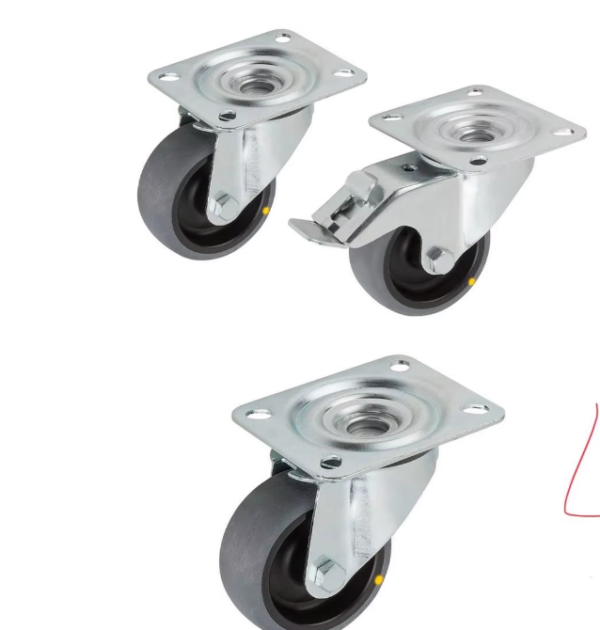
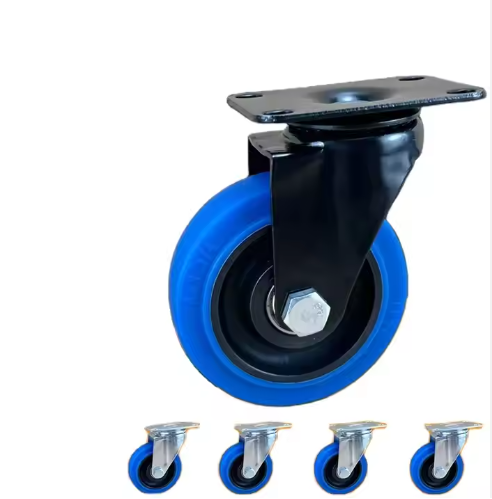
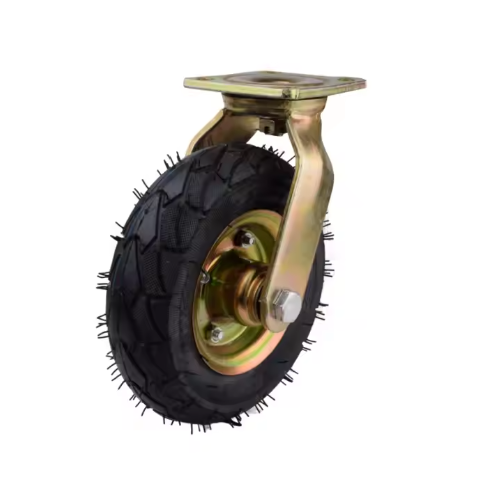
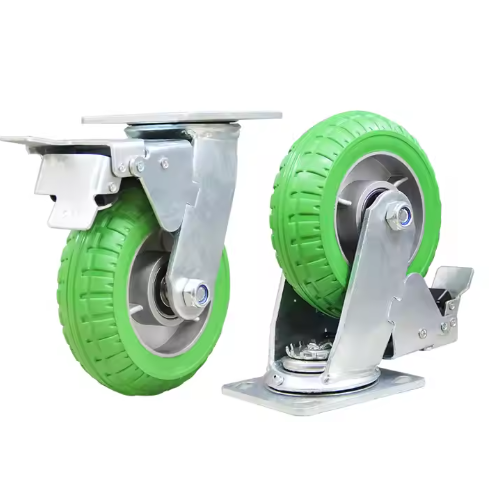
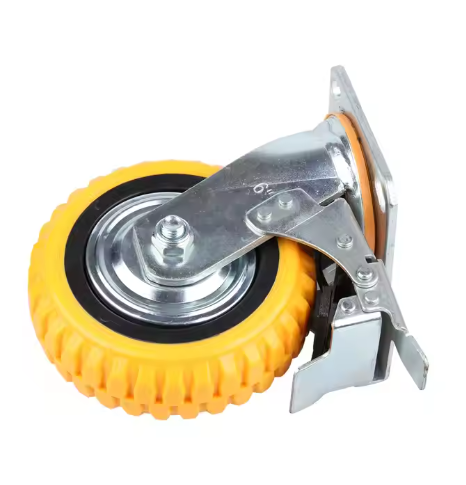
Reviews
There are no reviews yet.